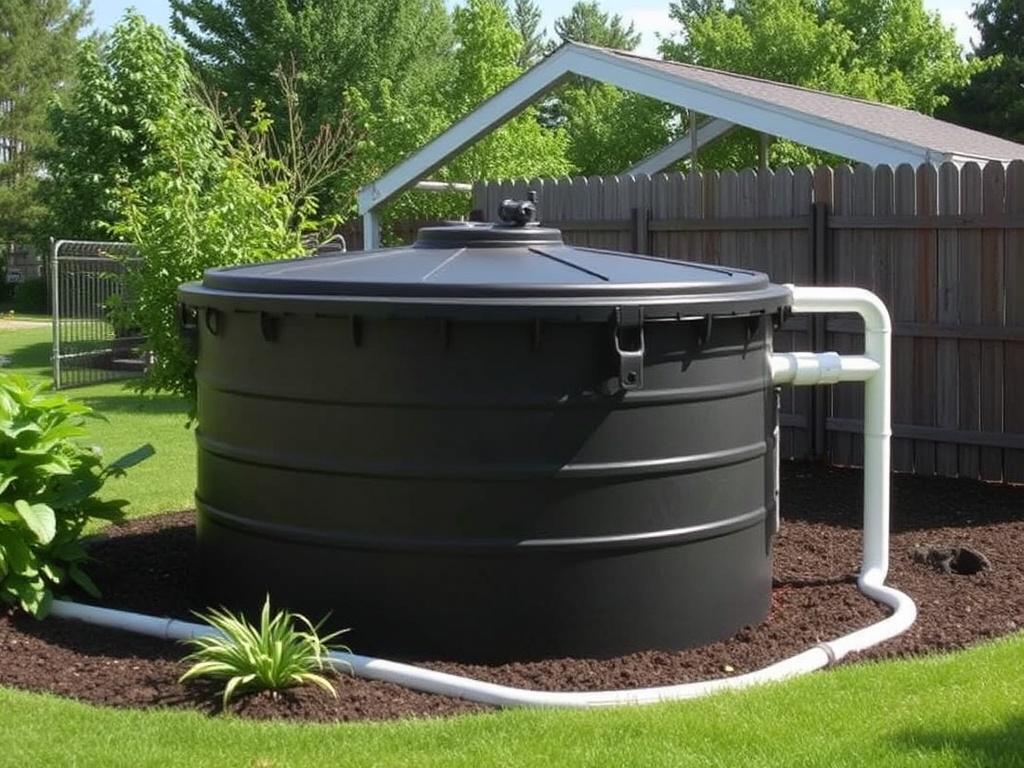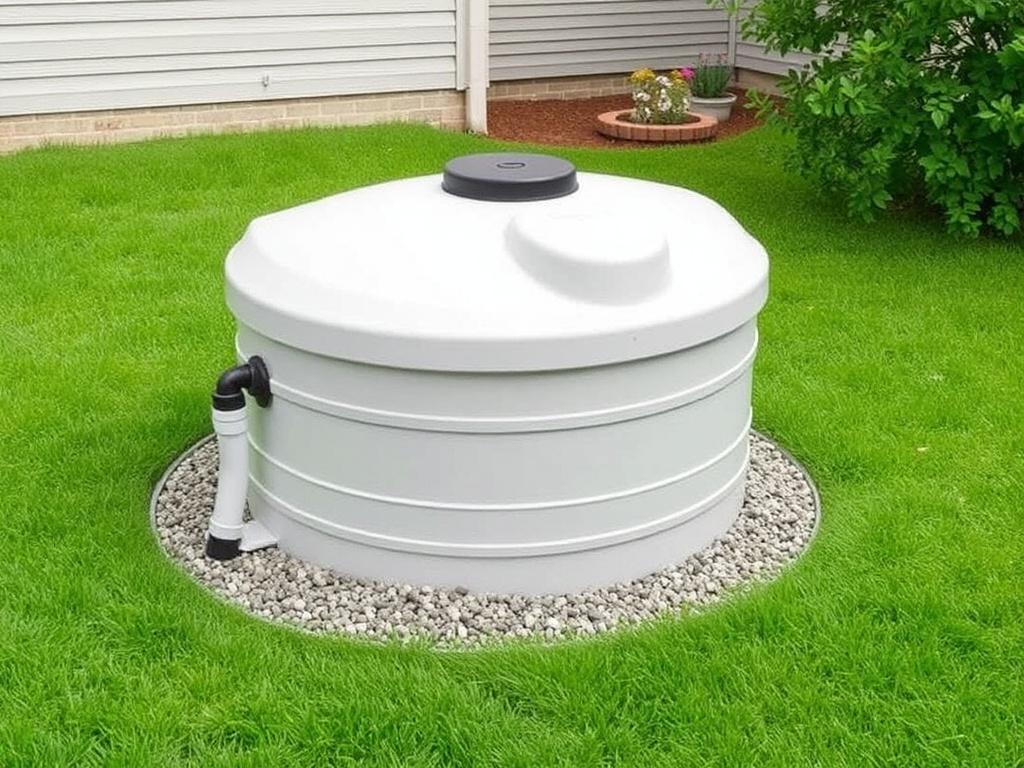Choosing the right septic tank size might seem like a simple task, but it’s actually one of the most important decisions you’ll make when setting up a home wastewater system. Whether you’re building a new house, replacing an old system, or upgrading for future needs, selecting the proper septic tank size directly affects the efficiency, lifespan, and environmental impact of your entire septic system. In this guide, we’ll walk you through everything you need to know about how to choose the right septic tank size—from understanding your household’s wastewater needs to exploring local regulations and maintenance considerations. By the end, you’ll feel confident knowing exactly what to look for when it comes to your septic tank.
- Understanding the Basics of Septic Tanks
- Factors to Consider When Choosing Septic Tank Size
- 1. Household Size and Water Usage
- 2. Number of Bedrooms
- 3. Soil Permeability and Drain Field Size
- 4. Local Regulations and Codes
- 5. Future Expansion Plans
- Common Septic Tank Sizes and Their Uses
- How to Calculate Septic Tank Size for Your Home
- Materials and Types of Septic Tanks to Consider
- Signs You Might Need a Larger or Smaller Septic Tank
- Tips for Maintaining Your Septic Tank for Optimal Performance
- Frequently Asked Questions About Septic Tank Size
- How often should a septic tank be pumped?
- Can I install a larger septic tank than required?
- Does adding a bedroom require a septic tank upgrade?
- What happens if my septic tank is too small?
- Working with Professionals to Choose the Right Septic Tank
- Cost Considerations When Choosing Septic Tank Size
- Environmental Impact of Properly Sized Septic Tanks
- Conclusion
Understanding the Basics of Septic Tanks
Before diving into the nitty-gritty of sizing, it’s essential to understand what a septic tank does. A septic tank is a buried, watertight container typically made from concrete, fiberglass, or plastic. It’s designed to collect wastewater from your home, allowing solids to settle at the bottom while the liquid effluent flows out to a drain field for further treatment. The tank serves as the first critical step in wastewater treatment for homes not connected to municipal sewer systems.
The size of a septic tank is usually measured in gallons, and it directly impacts how effectively your system processes wastewater. A tank that’s too small may become overwhelmed, leading to clogs, backups, and costly repairs. Conversely, a tank that’s too large can be unnecessarily expensive and occupy more land than needed. Striking the right balance means sizing the tank based on your unique household needs and regulatory guidelines.
Factors to Consider When Choosing Septic Tank Size
Many factors influence how to choose the right septic tank size, making it far more than a simple matter of picking the biggest tank in the store. Let’s explore the most critical factors to consider:
1. Household Size and Water Usage
One of the primary considerations is the number of people living in the home. Why? Because septic tanks are designed to accommodate a certain volume of daily wastewater flow, which depends heavily on the number of occupants and their water use habits. Typical estimates consider average daily water use per person—usually around 60 to 75 gallons per day.
So, for example, a family of four typically deposits between 240 and 300 gallons of wastewater daily. The septic tank must be large enough to handle this volume to provide proper retention time for solids settling and to prevent system overload.
2. Number of Bedrooms
Local building codes and regulations often use the number of bedrooms as a proxy for estimating septic tank size because bedrooms typically correlate with occupancy. For instance, a standard rule of thumb might require a 1000-gallon septic tank for a three-bedroom house and a larger size for more bedrooms.
3. Soil Permeability and Drain Field Size
The soil type and how well it absorbs water influences the entire system’s design, including septic tank size. Soils with high permeability can handle larger volumes of effluent quickly, while clay-heavy or poorly draining soils require smaller daily flows and potentially larger tanks for better settling.
4. Local Regulations and Codes
Always check with your local health department or building authority before making a decision. Many jurisdictions have minimum septic tank sizes and specific design standards based on the number of bedrooms or estimated flow. These regulations exist to protect public health and prevent environmental contamination.
5. Future Expansion Plans
If you anticipate adding bedrooms, guests, or increasing water use with appliances like hot tubs or irrigation systems, it’s wise to factor future growth into your tank size choice. Building a bigger septic tank now can save money and disruption later.
Common Septic Tank Sizes and Their Uses
Septic tanks come in various standard sizes. Understanding what’s commonly available can help you match your household needs to the best option.
| Septic Tank Size (Gallons) | Recommended Household Size | Typical Number of Bedrooms | Average Daily Wastewater Flow |
|---|---|---|---|
| 750 | 1-2 persons | 1-2 bedrooms | 120-150 gallons |
| 1000 | 3-4 persons | 3 bedrooms | 240-300 gallons |
| 1250 | 4-5 persons | 4 bedrooms | 300-375 gallons |
| 1500 | 5-6 persons | 5+ bedrooms | 375-450 gallons |
Always remember that these figures are general guidelines. Your local health department may require larger tanks depending on soil conditions and flow estimates.
How to Calculate Septic Tank Size for Your Home
If you want a more customized approach beyond general rules, calculating your septic tank size based on actual water usage and code requirements offers precision. Here’s a straightforward method:
- Estimate average daily water use per person (usually 60-75 gallons).
- Multiply by number of people in your home to get total daily wastewater flow.
- Determine the required retention time. Most tanks require 24-48 hours of settling time.
- Apply any local code multipliers or factors for safety and future growth.
For example, a household of five with an average water usage of 70 gallons per person per day generates 350 gallons of wastewater daily. If the septic tank is designed to hold two days of flow, you’d multiply 350 gallons by 2, producing a recommended 700-gallon septic tank. Considering local codes and safety margins, you might choose a 1000-gallon tank in practice.
Materials and Types of Septic Tanks to Consider

While size is crucial, the septic tank’s material and type can also affect your selection and installation quality. Here are the common options:
- Concrete: Durable and heavy, concrete tanks are commonly used and resistant to damage, but they may be prone to cracks over time if not installed properly.
- Fiberglass: Lightweight and easy to install, fiberglass tanks resist corrosion and cracking; however, they can be more expensive.
- Plastic (Polyethylene): Affordable and easy to transport, plastic tanks are resistant to rusting but may float in areas with high groundwater unless properly anchored.
Choosing the material will depend on your budget, soil conditions, and installation site.
Signs You Might Need a Larger or Smaller Septic Tank
If you’re replacing or upgrading an existing system, knowing these warning signs can help you determine if your previous septic tank size was adequate:
- Frequent backups or slow drains: Could be a sign of undersized tank or clogged drain fields due to overload.
- Wet spots or odors near the septic system: May indicate poor effluent processing because the tank is too small.
- Low water usage or occupancy changes: If household size decreases, a smaller tank might suffice for efficiency and cost savings.
Consult a septic professional to evaluate your system if any of these problems arise.
Tips for Maintaining Your Septic Tank for Optimal Performance
Beyond the initial selection, how you maintain your septic tank influences its lifespan and efficiency. Here are some easy tips to keep your system in top shape:
- Regular pumping: Pump your septic tank every 3-5 years to remove accumulated solids.
- Monitor water usage: Overuse can overwhelm even the right-sized tank, so conserve water where possible.
- Avoid flushing harmful chemicals: Chemicals kill bacteria essential for breaking down waste.
- Protect the drain field: Don’t park vehicles or build structures on the drain field area.
- Schedule inspections: Have your septic system inspected every few years by professionals.
Frequently Asked Questions About Septic Tank Size
How often should a septic tank be pumped?
Most experts recommend pumping your septic tank every 3 to 5 years, depending on its size, number of occupants, and water usage. Regular pumping prevents solids from building up and causing system failure.
Can I install a larger septic tank than required?
Yes, installing a larger septic tank is generally acceptable and may provide more buffer capacity. However, tanks that are too large might not allow solids to settle properly, so discuss options with a professional.
Does adding a bedroom require a septic tank upgrade?
Often yes. Since more bedrooms usually mean more occupants and increased wastewater, many local codes require an appropriately sized septic tank for the new occupancy.
What happens if my septic tank is too small?
A small septic tank increases the risk of solid waste overflowing into the drain field, leading to clogs, backups, and potential environmental contamination.
Working with Professionals to Choose the Right Septic Tank

While this article provides a thorough understanding of how to choose the right septic tank size, consulting with licensed septic contractors or engineers can make the process smoother. They can assess your site-specific conditions, local codes, and household needs to recommend the best size and type of tank.
Make sure professionals:
- Perform soil percolation and site evaluations.
- Review local health and environmental regulations.
- Help design and install the septic system properly.
- Provide cost estimates and maintenance tips.
Building a good relationship with your septic professional ensures long-term satisfaction and fewer costly surprises.
Cost Considerations When Choosing Septic Tank Size
The price of septic tanks varies by size and material. Here’s a rough idea of costs associated with different tank sizes:
| Tank Size (Gallons) | Estimated Cost (Material Only) | Notes |
|---|---|---|
| 750 | $800 – $1,200 | Suitable for small households |
| 1000 | $1,000 – $1,500 | Most common size for average homes |
| 1250 | $1,200 – $1,800 | For larger households or 4-bedroom homes |
| 1500 | $1,500 – $2,200 | Best for homes with 5 or more bedrooms |
Remember these estimates exclude installation, permitting, and drainage system costs, which can significantly add to the overall price.
Environmental Impact of Properly Sized Septic Tanks
Choosing the right septic tank size does more than just keep your home plumbing working smoothly. It has a direct effect on protecting local groundwater and surrounding ecosystems. Undersized or poorly maintained septic tanks can leak raw sewage, contaminating water supplies and harming wildlife.
Proper sizing ensures optimal treatment of household wastewater, reducing pollutants and minimizing the chance of system failure. By investing the time and effort in selecting the right septic tank size, you also help protect your community and environment.
Conclusion
Knowing how to choose the right septic tank size isn’t just a technical decision; it’s a key part of responsible homeownership that impacts your comfort, finances, and the environment. By considering factors like household size, water usage, local regulations, and future plans, you can select a septic tank that meets your current needs and grows with you. Don’t forget to factor in the right materials, seek expert guidance, and commit to regular maintenance to keep your septic system running smoothly for decades. With the right knowledge and planning, you’ll ensure your septic system is an invisible yet efficient part of your home’s infrastructure—a foundation that supports healthy living and environmental stewardship.
Помогла вам статья?






